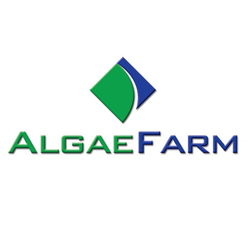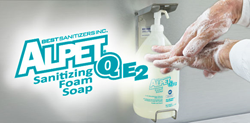International Sale of Algae Industry Trademark
Sunday, May 3rd, 2015
Bridgewater, NJ (PRWEB) April 13, 2015
Trademark Offering
The trademark offering represents the word mark, Algae Farm®, its logo, and an extensive list of goods and services that it may represent. Historically, the original registration filing application was submitted May 8, 2009. Its first use in commerce occurred July 22, 2011 followed quickly by the registration approval on October 11 that same year. This is a significant achievement. Algae Farm is the first trademark documented by the USPTO covering this technology.
The logo combines the two words to make only one word, “AlgaeFarm”, with “Algae” in green and “Farm” in blue. A diamond is placed above the word and is divided by a curved band, part of which is in green and the other part in blue, all with black shadows.
In addition, the trademark includes a list of goods and services representing six US Classes (001, 005, 006, 010, 026, 046) and one International Class (001 – Primary Class). In short, the list includes usage diversification for:
Chemical usage in industry and science, including the biochemical and chemical industries, the fields of oil exploration and production, and fuel/storage tank additives
Emollient usage as an ingredient in manufacturing cosmetics, toiletries, and pharmaceuticals
Functionalized silicones for use in the manufacture of personal care and cosmetic compositions
Perfluorinated chemical compounds prepared synthetically for use in the manufacture of cosmetics and pharmaceuticals
Non-chemical bio-fertilizers
Algae Industry Facts
The algae industry is an unstoppable global force with its worldwide fully sustainable and low impact economy. It is developing a new range of third generation applications as bioenergy, biofuels, and bio-based products. Algae can be cultivated to produce a variety of products for large to small markets. The 2014 global algae contributory market was estimated to be in excess of $ 7 billion.
Algae is a sustainable resource of biomass and oils for fuel because the plants produce and store energy in the form of oil more efficiently than any other known natural or engineered process. As with renewable aviation fuels, the algae vehicle fuel alternative is a “drop-in” replacement, which means it chemically mimics the properties of petroleum-based gasoline. In addition, green gasoline could be used at any blend level, in any gasoline engine. The US Navy and Air Force, as well as the world’s leading airlines, purchase and consume significant quantities of algae-based fuels annually.
Algae can be turned into bio-based products, such as plastics, pharmaceuticals, and industrial chemicals. Because protein and carbohydrate are produced by algae, it can be turned into health foods rich in omega-3s, as well as stockfeed for cattle, sheep, pigs, poultry and fish.
In the United States, many commercially minded algae researchers, algae producers, and equipment companies are focusing on new algae farming and indoor biomanufacturing opportunities for higher value products like nutraceuticals, cosmetics, feeds, food, ingredients, and bioplastics.
Algae Benefits
Some of algae’s many benefits include daily harvesting, high biofuel yields, consumption of CO2, wastewater purification, energy production, and farming multiplicity from ponds to photobioreactors to fermenters. Its promising long-term sustainability is credited primarily to the various methods of cultivation used on an algae farm.
The Algae Farm trademark (Registration #4038939) auction will run from noon May 13th to noon May 15th, 2015. Bidders may register for the auction and view specific details about the trademark at http://www.ipauctions.com.
About IpAuctions™
IpAuctions™ is the leading online auction firm specializing in the worldwide sale of intellectual property assets. The 14 year old firm has a proprietary international database of over 10,000 IP attorneys, corporate buyers, and venture capitalists. For more information about this sale or other intellectual property sales, please contact Brian Seamone by calling (908)-595-2106.



